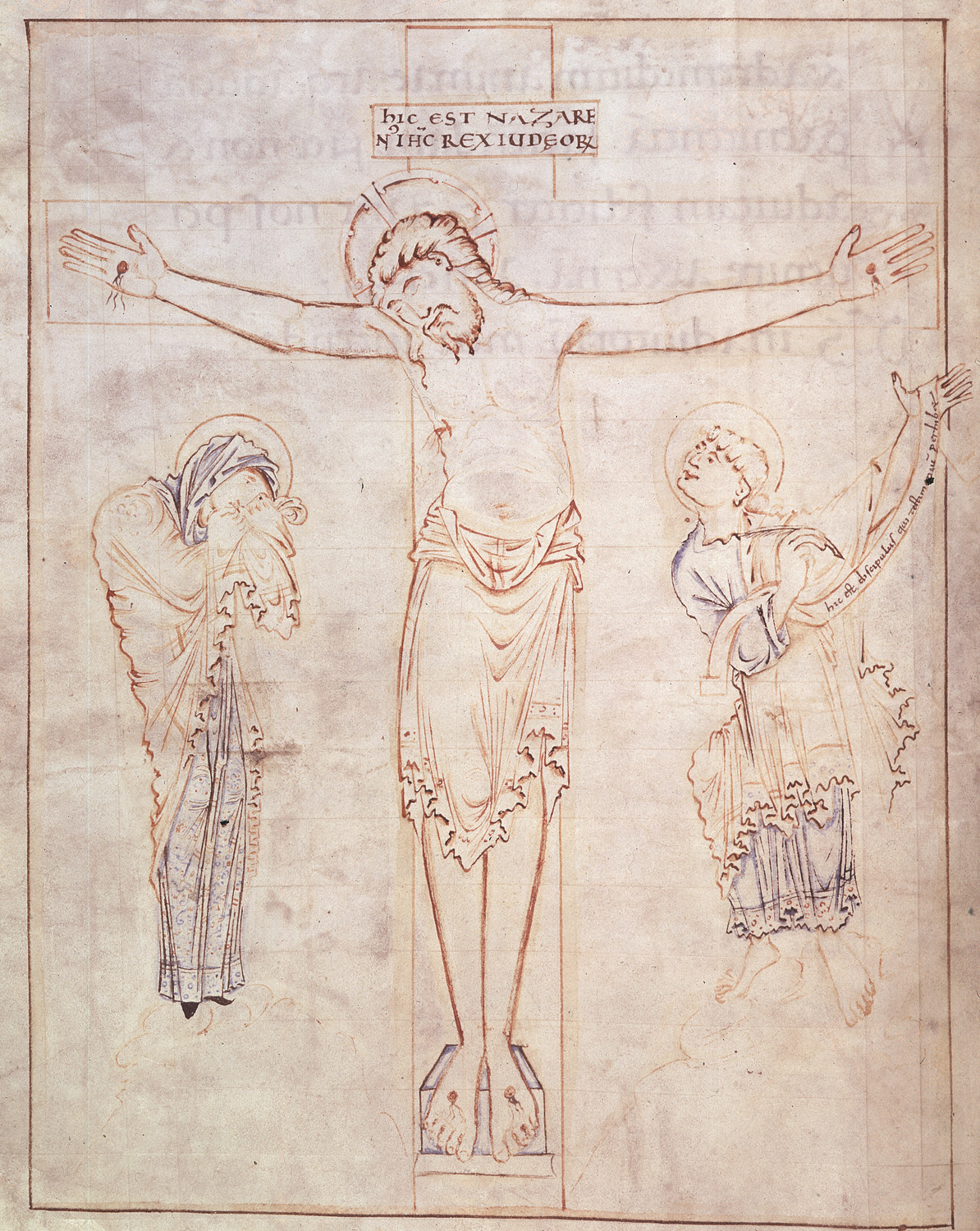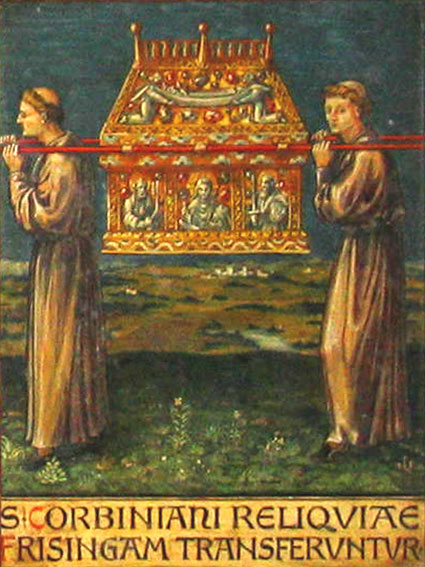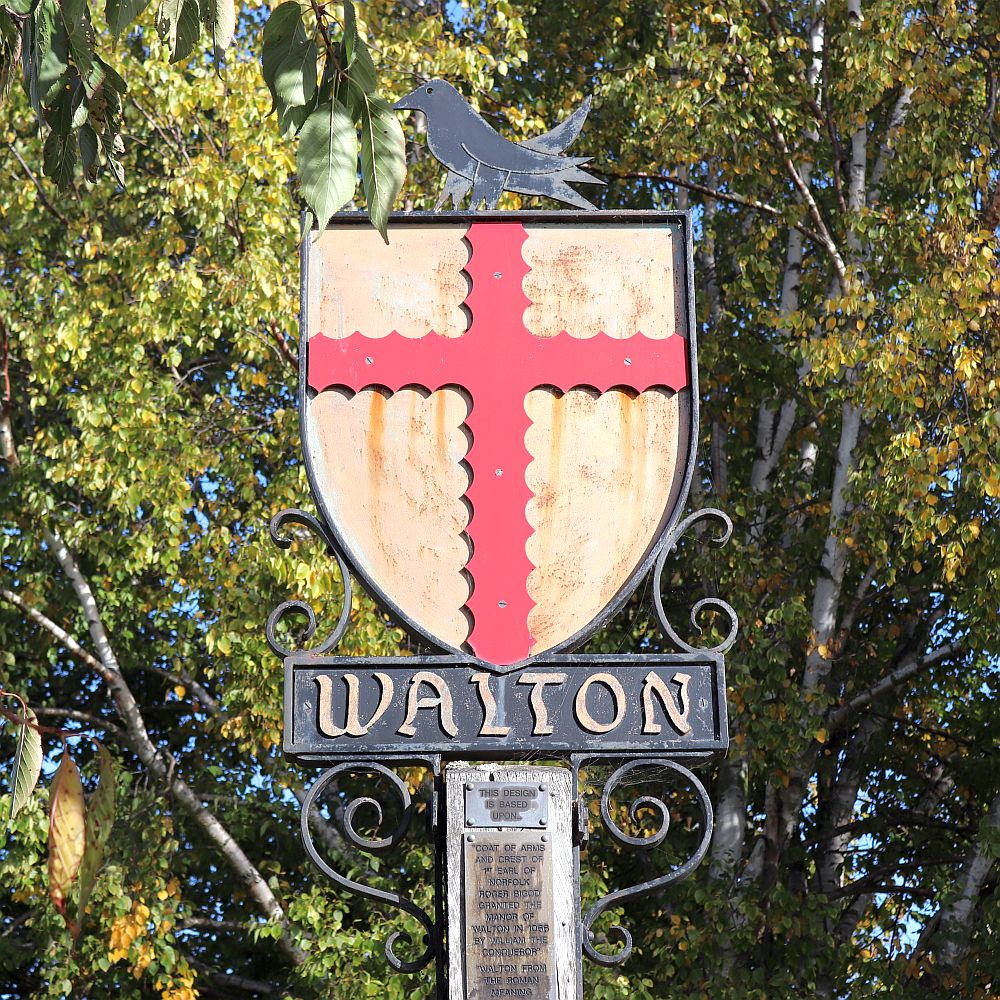|
Felix Of Burgundy
Felix of Burgundy (died 8 March 647 or 648), also known as Felix of Dunwich, was the first bishop of the kingdom of the East Angles. He is widely credited as the man who introduced Christianity to the kingdom. Almost all that is known about him comes from the ''Ecclesiastical History of the English People'', completed by the English historian Bede in about 731, and the ''Anglo-Saxon Chronicle''. Bede wrote that Felix freed "the whole of this kingdom from long-standing evil and unhappiness". Felix came from the Francia, Frankish kingdom of Kingdom of Burgundy, Burgundy, and may have been a priest at one of the monasteries in Francia founded by the Irish missionary Columbanus—he may have been Bishop of Châlons, before being forced to seek refuge elsewhere. Felix travelled from Burgundy to Canterbury, before being sent by Archbishop Honorius of Canterbury to Sigeberht of East Anglia's kingdom in about 630 (travelling by sea to Babingley in Norfolk, according to local legend). U ... [...More Info...] [...Related Items...] OR: [Wikipedia] [Google] [Baidu] |
Saint
In Christianity, Christian belief, a saint is a person who is recognized as having an exceptional degree of sanctification in Christianity, holiness, imitation of God, likeness, or closeness to God in Christianity, God. However, the use of the term ''saint'' depends on the context and Christian denomination, denomination. In Anglican Communion, Anglican, Oriental Orthodox, and Lutheranism, Lutheran doctrine, all of their faithful deceased in Heaven are considered to be saints, but a selected few are considered worthy of greater honor or emulation. Official Ecclesiastical polity, ecclesiastical recognition, and veneration, is conferred on some denominational saints through the process of canonization in the Catholic Church or glorification in the Eastern Orthodox Church after their approval. In many Protestant denominations, and following from Pauline usage, ''saint'' refers broadly to any holy Christian, without special recognition or selection. While the English word ''saint'' ... [...More Info...] [...Related Items...] OR: [Wikipedia] [Google] [Baidu] |
Columbanus
Saint Columbanus (; 543 – 23 November 615) was an Irish missionary notable for founding a number of monasteries after 590 in the Frankish and Lombard kingdoms, most notably Luxeuil Abbey in present-day France and Bobbio Abbey in present-day Italy. Columbanus taught an Irish monastic rule and penitential practices for those repenting of sins, which emphasised private confession to a priest, followed by penances imposed by the priest in reparation for the sins. Columbanus is one of the earliest identifiable Hiberno-Latin writers. Sources Most of what we know about Columbanus is based on Columbanus' own works (as far as they have been preserved) and Jonas of Susa's ''Vita Columbani'' (''Life of Columbanus''), which was written between 639 and 641. Jonas entered Bobbio after Columbanus' death but relied on reports of monks who still knew Columbanus. A description of miracles of Columbanus written by an anonymous monk of Bobbio is of much later date.O'Hara, Alexander, an ... [...More Info...] [...Related Items...] OR: [Wikipedia] [Google] [Baidu] |
Ramsey Abbey
Ramsey Abbey was a Order of Saint Benedict, Benedictine abbey in Ramsey, Cambridgeshire, Ramsey, Huntingdonshire (now part of Cambridgeshire), England. It was founded about AD 969 and Dissolution of the Monasteries, dissolved in 1539. The site of the abbey in Ramsey is now a scheduled monument. Most of the abbey's buildings were demolished after the dissolution but surviving structures are Listed building#Categories of listed building, Grade I and Grade II* listed buildings. Ramsey Abbey Gatehouse is in the care of the National Trust for Places of Historic Interest or Natural Beauty, National Trust and the Church of St Thomas à Becket, Ramsey was one of the buildings of the abbey. The Abbey Ramsey Abbey was founded in 969 by Oswald of Worcester, Oswald, Bishop of Worcester on land donated by Æthelwine, Ealdorman of East Anglia (Earl Ailwyn), where he had already built a wooden chapel for three monks. The foundation was part of the mid-10th-century English Benedictine reform, i ... [...More Info...] [...Related Items...] OR: [Wikipedia] [Google] [Baidu] |
Soham Abbey
Soham Abbey was an Anglo-Saxon monastery in Soham, which at the time was in the Kingdom of East Anglia. Constructed by St Felix of Burgundy during the early part of the 7th century, it was the first Roman Christian site to be established in Cambridgeshire. History Soham Abbey was founded around 630 by Felix of Burgundy, the first bishop of East Anglia. After his death in 647, his remains were moved from his episcopal see at Dommoc to the chancel of the minster church at Soham to preserve them from desecration by Danish raiders. The Danes attacked East Anglia in 869. The abbey was destroyed the following year and was never rebuilt. Æthelric (bishop of Dorchester) later removed Felix's remains to Ramsey Abbey. In 1189, Richard I gave the parish church to the Cistercian Abbey of Le Pin (Vienne), whose abbot was his almoner. In 1285 Le Pin rented the Soham estate including the patronage of the vicarage, to its fellow-Cistercian Abbey of Rewley. Abbey church It is believed th ... [...More Info...] [...Related Items...] OR: [Wikipedia] [Google] [Baidu] |
Translation (relic)
In Christianity, the translation of relics is the ceremonial removal of holy objects from one place to another (usually a higher-status location). Usually only the movement of the remains of a saint's body would be treated so formally, with secondary relics such as items of clothing treated with less ceremony. Translations could be accompanied by many acts, including all-night vigils and processions, often involving entire communities. The solemn translation (in Latin, ) of relics is not treated as the outward recognition of sanctity. Rather, miracles confirmed a saint's sanctity, as evinced by the fact that when the papacy attempted to make canonization an official process in the twelfth century, many collections of miracles were written in the hope of providing proof of the saint-in-question's status. In the early Middle Ages, the solemn translation marked the moment at which, the saint's miracles having been recognized, the relic was moved by a bishop or abbot to a prominent po ... [...More Info...] [...Related Items...] OR: [Wikipedia] [Google] [Baidu] |
Relic
In religion, a relic is an object or article of religious significance from the past. It usually consists of the physical remains or personal effects of a saint or other person preserved for the purpose of veneration as a tangible memorial. Relics are an important aspect of some forms of Buddhism, Christianity, Islam, shamanism, and many other religions. ''Relic'' derives from the Latin ''reliquiae'', meaning "remains", and a form of the Latin verb ''relinquere'', to "leave behind, or abandon". A reliquary is a shrine that houses one or more religious relics. In classical antiquity In ancient Greece, a polis, city or Greek temple, sanctuary might claim to possess, without necessarily displaying, the remains of a venerated hero as a part of a Greek hero cult, hero cult. Other venerable objects associated with the hero were more likely to be on display in sanctuaries, such as spears, shields, or other weaponry; chariots, ships or Figurehead (object), figureheads; furniture such a ... [...More Info...] [...Related Items...] OR: [Wikipedia] [Google] [Baidu] |
Suffolk
Suffolk ( ) is a ceremonial county in the East of England and East Anglia. It is bordered by Norfolk to the north, the North Sea to the east, Essex to the south, and Cambridgeshire to the west. Ipswich is the largest settlement and the county town. The county has an area of and a population of 758,556. After Ipswich (144,957) in the south, the largest towns are Lowestoft (73,800) in the north-east and Bury St Edmunds (40,664) in the west. Suffolk contains five Non-metropolitan district, local government districts, which are part of a two-tier non-metropolitan county administered by Suffolk County Council. The Suffolk coastline, which includes parts of the Suffolk & Essex Coast & Heaths National Landscape, is a complex habitat, formed by London Clay and Crag Group, crag underlain by chalk and therefore susceptible to erosion. It contains several deep Estuary, estuaries, including those of the rivers River Blyth, Suffolk, Blyth, River Deben, Deben, River Orwell, Orwell, River S ... [...More Info...] [...Related Items...] OR: [Wikipedia] [Google] [Baidu] |
Felixstowe
Felixstowe ( ) is a port town and civil parish in the East Suffolk District, East Suffolk district, in the county of Suffolk, England. The estimated population in 2017 was 24,521. The Port of Felixstowe is the largest Containerization, container port in the United Kingdom. Felixstowe is approximately northeast of London. History There are competing theories as to how the name of Felixstowe arose. One is that the town is named after Felix of Burgundy, a saint and the first bishop of the East Angles in the seventh century, although this is unlikely as the name Felixstowe is not recorded for almost 900 years. An alternative etymology is from the Anglo-Saxon or Old English name "Filicia" and "stōw", meaning a place of location. Literally Filicia's place. The earliest recorded names "Filchestou" from 1254, and "Filchestowe" in 1291 support this idea. It is possible that the later reworking of Filicia/Filche was made with the intention of referencing Felix of Burgundy. The old Feli ... [...More Info...] [...Related Items...] OR: [Wikipedia] [Google] [Baidu] |
Walton, Suffolk
Walton is a settlement and former civil parish, now in the parish of Felixstowe, in the East Suffolk district, in the county of Suffolk, England, lying between the rivers Orwell and Deben. History There is archaeological evidence of Bronze Age field systems near Walton Hall. A Late Bronze Age hoard comprising a Type 4 barbed spearhead and a south-eastern type socketed axe was found in the first railway cutting to the west of the Lilds site in the 19th century (FEX 010). A Roman coin of Antoninus pius (AD 157–8)was discovered just to the west of the Lidls site (FEX 029). Later, a Roman fort, Walton Castle, enclosing about , similar to Burgh Castle, stood on high land near Brackenbury Fort and Bull's Cliff, now in Felixstowe. Probably built in the third or fourth centuries AD, it formed part of the coastal defences of the eastern shore of Britain, and overlooked the mouth of the River Deben. The walls and foundations subsided in cliff erosion during the 18th century, but ... [...More Info...] [...Related Items...] OR: [Wikipedia] [Google] [Baidu] |
Dommoc
''Dommoc'' (or ''Domnoc''), a place not certainly identified but probably within the modern county of Suffolk, was the original seat of the Anglo-Saxon bishops of the Kingdom of East Anglia. It was established by Sigeberht of East Anglia for Saint Felix in . It remained the bishopric of all East Anglia until , when Theodore of Tarsus, Archbishop of Canterbury, divided the see and created a second bishopric, the See of Elmham associated with both North Elmham, Norfolk and South Elmham, Suffolk. The see of ''Dommoc'' continued to exist until the time of the Viking Wars of the 860s, after which it lapsed. Foundation The primary authority for the foundation of the see of ''Dommoc'' is Bede's '' Historia ecclesiastica'' which stipulates Felix's mission in relation to Sigeberht's rule. Following the assassination of Eorpwald of East Anglia by Ricberht in the kingdom fell back into "error" for three years, before Sigeberht, brother or half-brother of Eorpwald, took possession of ... [...More Info...] [...Related Items...] OR: [Wikipedia] [Google] [Baidu] |
Episcopal See
An episcopal see is the area of a bishop's ecclesiastical jurisdiction. Phrases concerning actions occurring within or outside an episcopal see are indicative of the geographical significance of the term, making it synonymous with ''diocese''. The word ''see'' is derived from Latin , which in its original or proper sense denotes the seat or chair that, in the case of a bishop, is the earliest symbol of the bishop's authority. This symbolic chair is also known as the bishop's . The church in which it is placed is for that reason called the bishop's cathedral, from Latin , meaning the 'church of the '. The word ''throne'' is also used, especially in the Eastern Orthodox Church, both for the chair and for the area of ecclesiastical jurisdiction. The term ''see'' is also used of the town where the cathedral or the bishop's residence is located. Catholic Church Within Catholicism, each diocese is considered to be a see unto itself with a certain allegiance to the See of Rome. ... [...More Info...] [...Related Items...] OR: [Wikipedia] [Google] [Baidu] |
Babingley
Babingley is a village and former civil parish, now in the parish of Sandringham, in the King's Lynn and West Norfolk district, in the county of Norfolk, England, about northwest of Castle Rising and north-north-east of King's Lynn. In 1931 the parish had a population of 91. On 1 April 1935 the parish was abolished and merged with Sandringham. The place-name 'Babingley' is first attested in the Domesday Book of 1086, where it appears as ''Babinghelea''. The name means 'the clearing of Babba's people'. The modern village is a small group of houses along the A149 road linking King's Lynn and Hunstanton. The site of the abandoned village is in fields west of the main road, marked by the ruin of St Felix's parish church. Saint Felix Babingley is said to be where St Felix of Burgundy, Apostle to the East Angles, landed in Britain in about AD 615. The Wuffingas, the East Anglian royal family, invited Felix to evangelise their kingdom. Babingley is remote from the former royal cap ... [...More Info...] [...Related Items...] OR: [Wikipedia] [Google] [Baidu] |






